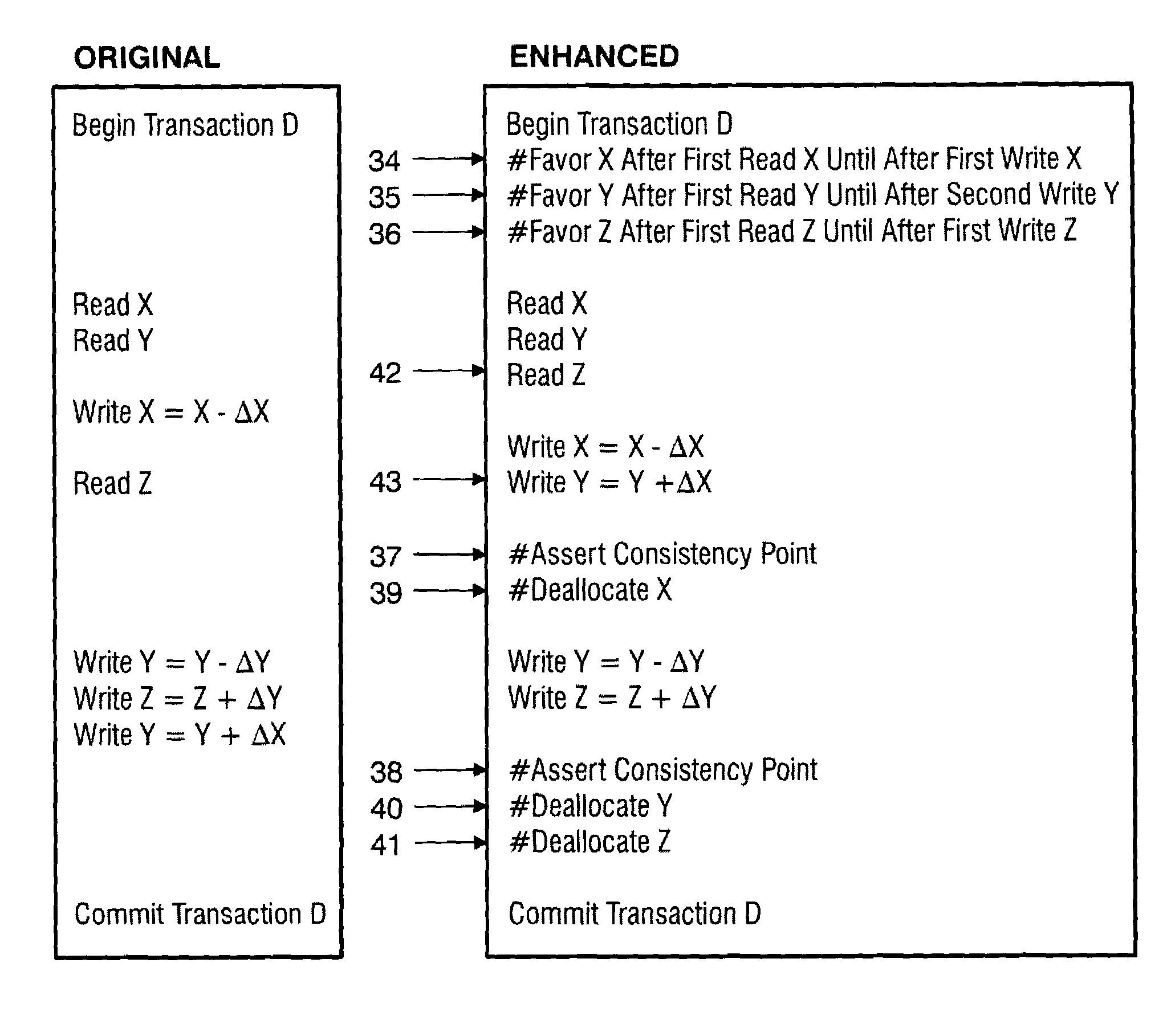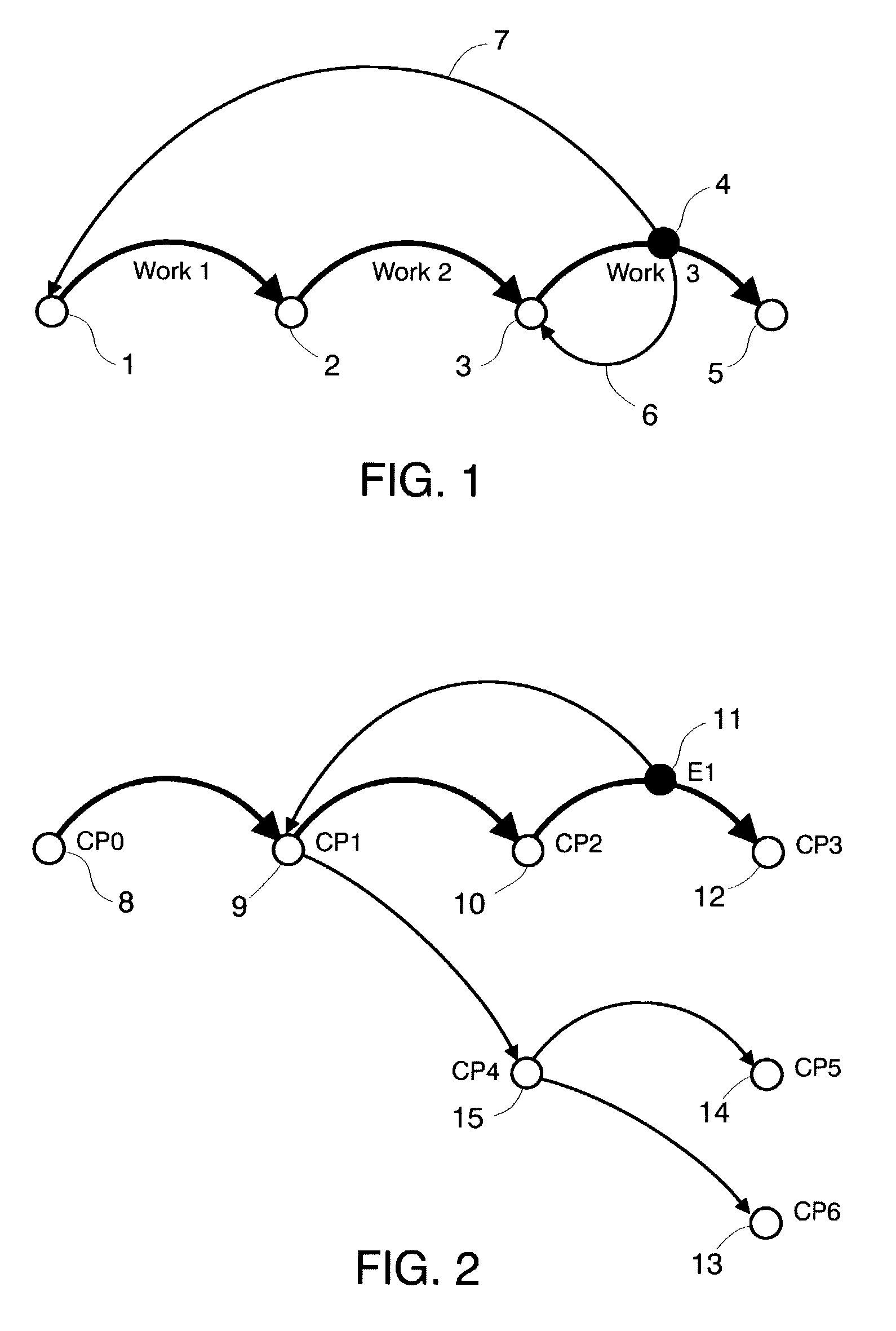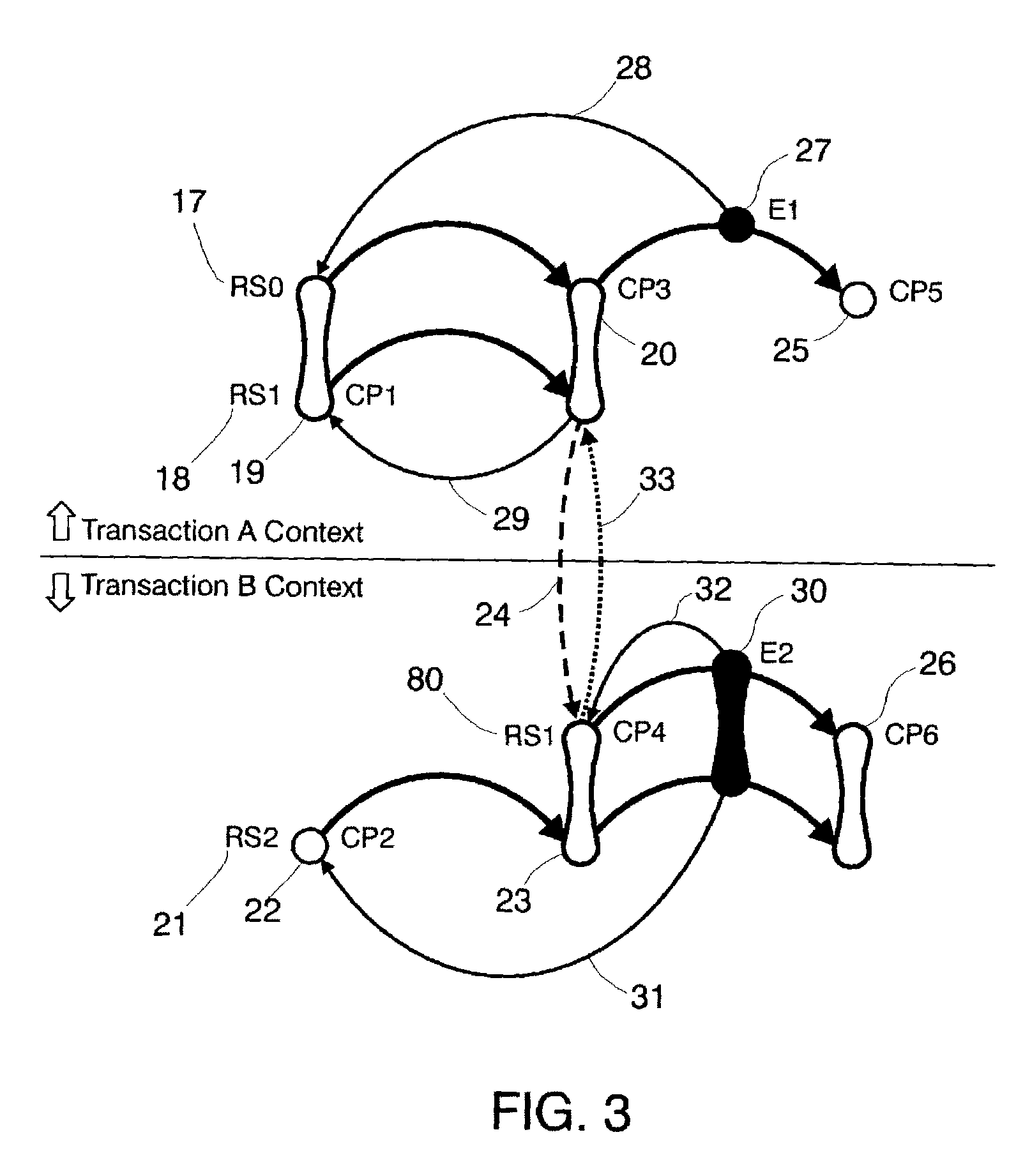Adaptive transaction manager for complex transactions and business process
- Summary
- Abstract
- Description
- Claims
- Application Information
AI Technical Summary
Benefits of technology
Problems solved by technology
Method used
Image
Examples
Embodiment Construction
[0068]Businesses work in an imperfect world, and attempt to impose their own order on events. Constantly in a state of flux, they persist in imposing ‘acceptable’ states through the efforts of all their employees, from the accountants running yearly, quarterly, weekly, or even daily accounts, to the zealous (or indifferent) stock clerks managing inventory.
[0069]When an error occurs, it is recognized because the result differs from what is expected. Results can differ from expectations in several ways, including computational results, resources consumed, catastrophic failures to complete the work, excessive time to complete the work, and so on. Typically, the business does not know either the explicit cause of an error or its full impact. For example, it may not know if data was corrupted (wrong account number), the procedure mistakenly performed (9*6=42), or the wrong procedure used (multiplied instead of divided). Obviously errors (including those of timeliness and resource overuse...
PUM
 Login to View More
Login to View More Abstract
Description
Claims
Application Information
 Login to View More
Login to View More - Generate Ideas
- Intellectual Property
- Life Sciences
- Materials
- Tech Scout
- Unparalleled Data Quality
- Higher Quality Content
- 60% Fewer Hallucinations
Browse by: Latest US Patents, China's latest patents, Technical Efficacy Thesaurus, Application Domain, Technology Topic, Popular Technical Reports.
© 2025 PatSnap. All rights reserved.Legal|Privacy policy|Modern Slavery Act Transparency Statement|Sitemap|About US| Contact US: help@patsnap.com



